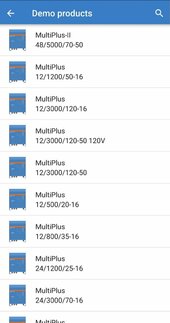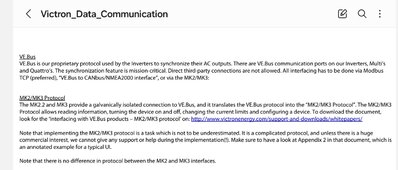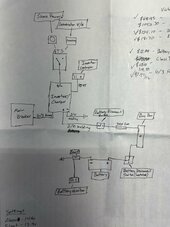contractor_chris
New Member
What is the purpose of changing the ac input current? Or when and why is it needed?If you have a need to change the AC input current, and you're not hooking up a Cerbo or other GX device, you may want it.
If you want the same control the panel offers via smartphone, a VE.Bus Smart Dongle will allow VictronConnect via bluetooth, and you can turn it on/off/charger only and change the AC input current limit. No other configuration changes are allowed.
The MK3-USB adapter will allow a PC/Mac running VictronConnect full control of the inverter, but it's a physical USB connection.
I just figured it made sense to turn the inverter on and off. Like when it's parked in my driveway at home, no reason to have It pushing power to everything discharging batteries for nothing. Then again I just leave it set and let the dc power w.e it wants (ie fridge) and nothing else makes a draw so really doesn't discharge any but at night a little.





